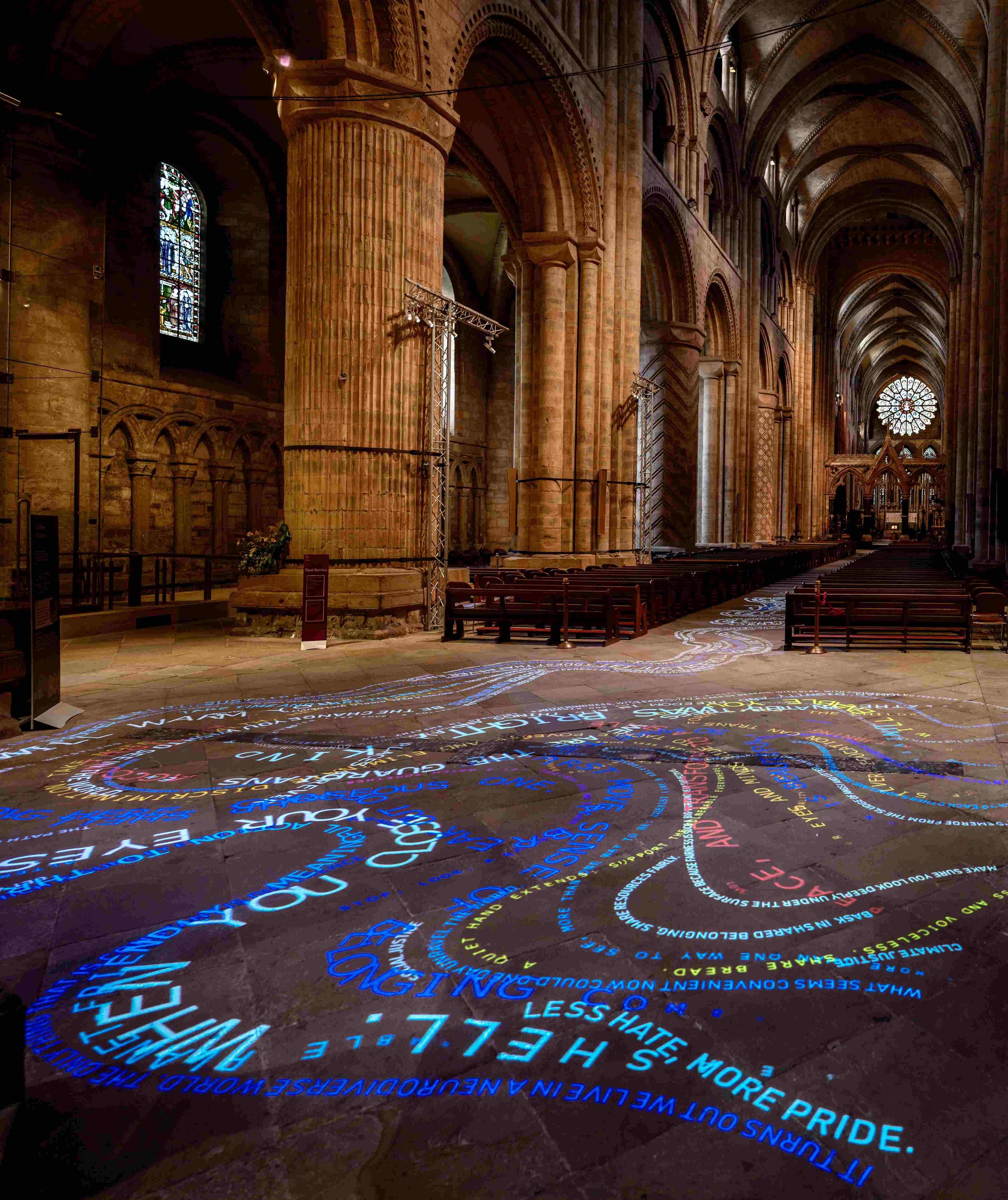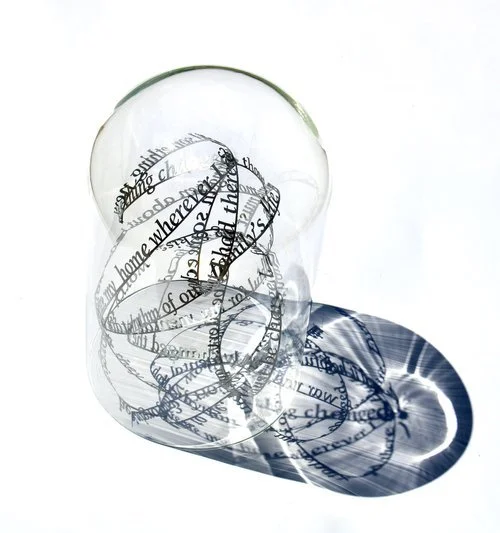When people ask how I created The Words That Bind Us, I tell them: I didn’t write it alone. The text flowed from hundreds of voices—gathered in workshops and in quiet corners of Durham Cathedral.
But the journey from raw word to living light wasn’t simple. It was tender work. And deeply human.
During the workshops, people spoke from the heart. They offered single words, scribbled sentences, powerful memories, and wild hopes. Some were poetic, others plainspoken. All were valid. All mattered.
My role was to listen and sense what lay beneath the words. Sometimes a phrase would shimmer—a fragment that seemed to carry the emotion of a whole group. Other times, I would take five different voices and weave them together into a single, resonant line.
Editing in this context quite a lot like sculpting. It was a process of distillation—retaining the truth, the urgency, the humanity. It needed rhythm in places but also an asymmetry and staccato that reflects the rawness and urgency of difficult statements. It needed silence. It needed space for people to find themselves within it.
Some phrases remained exactly as they were offered—raw and unpolished. Others I reshaped gently. Always, my aim was to preserve meaning and honour intent, while creating a river that represented a diversity of voices and views.
This is not authorship in the traditional sense. It’s more like a kind of stewardship of shared meaning.
The final text that appears in the artwork is not fixed. It shifts, animates, glimmers. It behaves like the collective consciousness it came from—alive, in motion, reflective. Some words rise to the surface. Others recede. It mimics thought, memory, and breath.
I am minded of a quote from Herman Hesse: “You cannot step into the same river twice, for the river has changed and you have changed.”

















